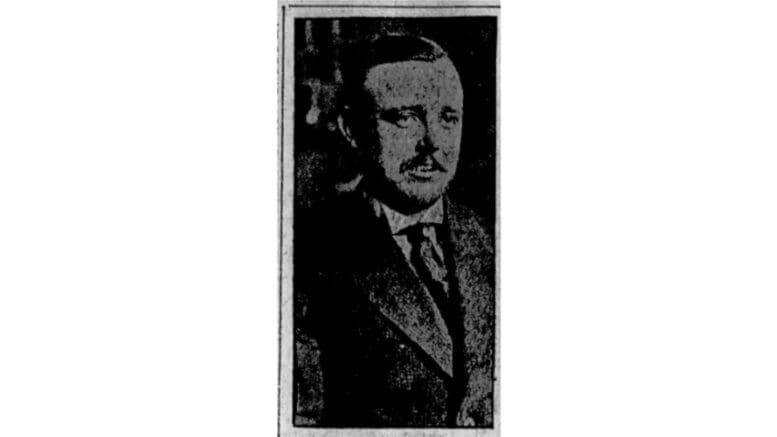Yesterday we ran a Marietta history article based on a 1910 crime feature from the Atlanta Georgian.
The Georgian was a newspaper published from 1906 to 1939. For most of its history, it was owned by William Randolph Hearst.
The article was about Horace Gray, a flamboyant and talkative career criminal who became famous in Marietta and Atlanta during his arrest, conviction, and later release in Marietta for allegedly passing a forged money order.
If Gray’s own accounts are to be believed, he was an American version of Professor James Moriarty, the fictional character Sherlock Holmes described as the Napoleon of Crime. He told Atlanta police he had invented an electric forgery machine, a secret code device, and had taken part in a high-profile safe-cracking that was in the national news at that time. In one article it was reported he told police that he had committed thefts all over Europe.
Gray complained that the only crime he hadn’t committed was the one he was accused of in Marietta.
We decided to dig a little deeper, drawing from other newspaper accounts of that time period, to see what further details of this case in Marietta could be determined and if the final outcome was ever published.
Here’s a brief timeline drawn from articles in The Atlanta Georgian, the Marietta Journal (the MDJ’s name at the time), and one short article in the Atlanta Journal.
The alleged crime took place on December 2, 1908. The Southern Express Company pressed charges against Gray for the passing of a forged money order.
In early 1909, Gray had gained already gained notoriety in Atlanta for bragging to police that he was a criminal mastermind, and for confessing to crimes that authorities doubted he was involved in.
The Atlanta police department released him, and after E.L. Robinson of the Southern Express Company identified Gray as the man who had passed a forged money order, he was arrested and tried in Marietta.
In March of 1909, just a few months after the alleged crime, he was convicted and sentenced to seven years in prison.
After the trial Gray’s attorney Col. H.B. Moss contacted Gray’s father, a wealthy Mississippian.
The elder Gray arranged for a deputy sheriff from Douglass County, Nebraska, and a federal marshall with knowledge of Gray’s activities to bring new evidence to court in Cobb County.
The officials testified that on December 2, 1908, the date of the alleged crime in Marietta, Gray was already in jail in Omaha, charged with mail fraud, and could not possibly have passed the forged money order in Marietta.
The September 3, 1909, issue of the Marietta Journal reported that the judge set a bond of $500 before releasing Gray and ordering a new trial, refusing the defense’s request to drop the charges altogether.
The presiding judge was Newton A. Morris, who had a checkered career of his own. According to a brief biography in the index of a letter from him archived at the University of Georgia library, Morris had been charged with attempted murder and cattle rustling in California before moving to Georgia and entering the UGA law school.
He was also alleged to be one of the ringleaders in the lynching of Leo Frank in 1915.
In 1910, about a year after his release on the forged money order charge, Gray threatened a lawsuit against the Southern Express Company for false imprisonment.
After threatening to sue the company, no record can be found in the Georgia Historic Newspaper archives to indicate that he followed through with his threats or that he was retried on the original forgery charge.
Horace Gray could have been written by Damon Runyon, the writer whose eccentric criminal characters inspired the musical Guys and Dolls. Contemporary news accounts described Gray as “smooth,” “dapper,” and “talkative,” and he was compared to Raffles, a fictional gentleman thief created by E.W. Hornung, popular at the time.
The Courier will continue to see what we can find out about the subsequent adventures of Horace C. Gray.
About Georgia Historic Newspapers
Georgia Historic Newspapers is a part of the GALILEO project and is housed at the University of Georgia. It’s an amazing resource for anyone with an interest in the history of Georgia and its regions.
According to the “About” page on its website:
The Georgia Historic Newspapers Archive is a project of the Digital Library of Georgia (DLG), a part of Georgia’s Virtual Library GALILEO and is based at the University of Georgia Libraries. Since 2007, the DLG has partnered with universities, archives, public libraries, historical societies, museums, and other cultural heritage institutions to digitize historical newspapers from around the state. The archive is free and open for public use and includes over two million Georgia newspaper pages between 1763 and 2021.
Newspaper titles are regularly digitized and added to the archive. If you are interested in including a particular title, you can visit our participation page. A majority of the newspapers on this site were digitized from the microfilm produced by the Georgia Newspaper Project (GNP). For more information about the microfilm available through the GNP, please visit their website.
